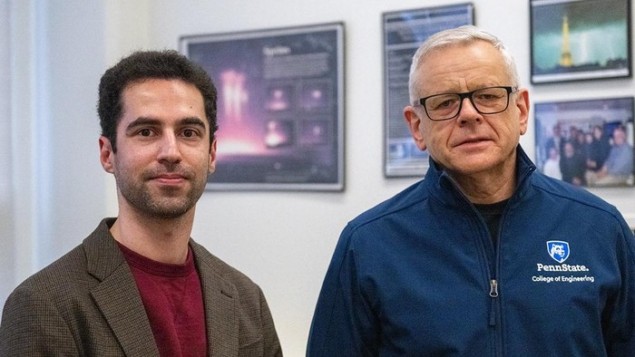
New insights into how X-ray flashes are produced during lightning strikes have been made by researchers in the US, France, and the Czech Republic. Using computer simulations, a team led by Victor Pasko at Penn State University showed how avalanches of electrons responsible for the flashes are triggered at a minimum threshold the electric fields produced by the precursor to lightning. This discovery could lead to the development of new techniques for producing X-rays in the lab.
Terrestrial gamma-ray flashes (TGFs) involve the emission of high-energy photons from sources within Earth’s atmosphere. While the term gamma-ray is used, most of the photons are created by the acceleration of electrons and are therefore X-rays.
These X-rays are emitted in the megaelectronvolt energy range and their creation is closely associated with lightning. Although TGFs are rare and incredibly brief, they are now regularly observed by instruments that detect gamma rays from space.
Space telescopes
“TGFs were discovered in 1994 by NASA’s Compton Gamma Ray Observatory,” Pasko explains. “Since then, many other orbital observatories have captured these high-energy events, including NASA’s Fermi Gamma-ray Space Telescope.”
Following their initial discovery, the origins of TGFs were linked to electrons that are liberated from air molecules by the intense electric fields of “lightning leaders”. These are channels of ionized air that form between a negatively charged cloud bas and the positively charged ground. As the name suggests, the creation of lightning leaders is followed shortly by lightning discharges.
Once these electrons are liberated in a lightning leader, they are accelerated by the electric field and collide with molecules to liberate more electrons. This process continues, very rapidly creating more and more electrons in what Pasko describes an “electron avalanche”.
Ionizing X-rays
As the electrons collide with molecules, some of the energy lost by the electrons is radiated in the form of X-rays. These X-rays travel in all directions – including back along the path of the electron avalanche. As a result, the X-rays can ionize more molecules upstream from the avalanche, liberating more electrons and making the TGFs even brighter.
After this initial model was conceived in the early 2000s, researchers attempted to recreate the behaviour in computer simulations. So far, however, these simulations have not managed to closely mimic the sizes of TGFs observed in real lightning strikes.
Pasko and colleagues believe that this lack of success is related to the relatively large size of these simulations, which usually model regions that are several kilometres across. However, this latest work suggests that TGFs typically form in highly compact regions (ranging from 10 to 100 m in size) surrounding the tips of lightning leaders. Until now, the reasons surrounding this compactness have largely remained a mystery.
Minimum threshold
In their study, the researchers assumed that TGFs only form when the strength of the lightning leader’s electric field exceeds a minimum threshold value. By simulating more compact regions of space, Pasko and colleagues were able to identify this threshold. What is more, the TGFs produced in this way matched real observations far more closely than previous simulations.

Lightning creates radioactive isotopes
Pasko and colleagues hope that future simulations could mimic the TGF electron avalanche mechanism far more closely – potentially leading to new techniques for producing X-rays in the lab. “In the presence of electrodes, the same amplification mechanism and X-ray production may involve generation of runaway electrons from the cathode material,” Pasko explains.
Ultimately, this could lead to deeper insights into how X-rays can be produced through controlled electrical discharges in gases. This could lead to compact, highly efficient X-ray sources. Pasko concludes, “We anticipate a lot of new and interesting research to explore different electrode materials, as well as gas pressure regimes and compositions that would lead to enhanced X-ray production from small discharge volumes.”
The work is described in Geophysical Research Letters.



